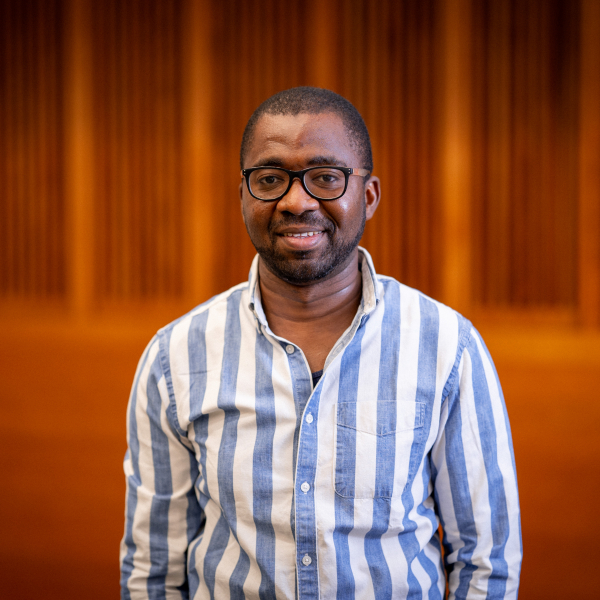Economist Andrew Jordan uses data analytics to uncover potential bias in the criminal justice system by studying the decisions made by courts, police, and prosecutors.
For most people, the word economics brings to mind dollar signs, or perhaps resource allocation more broadly. According to Andrew Jordan, assistant professor of economics in Arts & Sciences, economics is actually all about decision making, and the choices may have nothing to do with money. For example, Jordan uses economics to study decision making in the potentially life-altering context of the criminal justice system.

“It’s often easier to understand the decisions people make in environments that have prices because prices give us a clear signal of what you have to give up to get something else. It’s a universal metric that we’ve agreed on,” Jordan explained. “When you go into these really important settings like criminal justice, where big decisions are being made but there are not prices, we can still use tools developed to study markets to understand those decisions.”
Before joining the Washington University faculty in 2021 as part of the first group of hires in Dean Feng Sheng Hu’s Digital Transformation Initiative, Jordan worked on research related to criminal justice in the Department of Economics at the University of Chicago, where he also discovered his affinity for data analysis.
“My advisor was getting into researching criminal justice data, and one day he said, ‘I have this dataset, but I can’t make heads or tails of it. Can you figure it out?’” Jordan recalled. “It was a monster of a dataset, but in a lot of ways it felt like a puzzle. We wanted to understand how decisions were being made in criminal cases, but we only had this incomplete or, in a certain way, encoded information.”
Sunshine laws, such as the Freedom of Information Act, combined with the advent of electronic record keeping have opened the floodgates to getting data from courts, police, and prosecutors. But the availability of raw information – while it allows new avenues of inquiry – presents new challenges in how to extract useful insights from masses of administrative data.
“A pure data analysis perspective can tell us how many people were sentenced to incarceration, how many were sentenced to probation, and how many went to trial and weren’t convicted,” Jordan said. “But we don’t end up with any deeper understanding of who was making those decisions or why they were making those decisions.”

By combining data analysis with models based in economic theory, Jordan can observe patterns in criminal cases to gain insights into prosecutorial decision making. Jordan’s recent work has focused on felony charges and plea bargaining in Chicago and Cook County, IL, where he examined prosecutors’ decisions about charges to file, cases to bring to trial, and terms of plea bargains. The patterns Jordan uncovered in the data suggest that prosecutors’ decision making includes some racial bias.
In his recent study on plea bargaining, for example, Jordan found some evidence that prosecutors favor securing long sentences over avoiding trials, especially for Black defendants. Jordan’s key finding was that cases against Black defendants are weaker overall. This pattern holds across all cases, not just those taken to trial, with the main effects of reducing plea bargain sentences and increasing trial rates among Black defendants.
In addition to making large datasets available, new technology has also allowed researchers to link datasets together, enabling them to track cases over time. Learning details about people’s lives at points in time when they weren’t directly in contact with the criminal justice system — for example, when they were in school or in their older adult lives with families and careers — can help Jordan and other researchers gain a deeper understanding of the biases and broader impacts of the system.
“I’ve always been interested in microeconomics, in the potential impacts of people’s everyday decisions, and I think that applying these techniques to criminal justice data in particular is a really good and important thing to be doing,” Jordan said. “Equity and fairness in criminal justice has been a big issue in the United States for a long time, of course, but it’s really in the fore now. And it’s not something that we’ve been able to address with serious data analysis until recently.”
Jordan brings his tools and approach to WashU undergraduates through “Economics of Criminal Justice,” a course that invites students to learn about economic models as they research and analyze real-world data from criminal justice systems across the U.S. He aims to update the course syllabus as his research program expands. In future projects, Jordan envisions analyzing criminal cases from “tip to tail” — from arrest, to charges, to plea bargaining or trial, and beyond — to capture a complete picture of the criminal justice system, identify points of potential bias, and recommend avenues for improvement.




